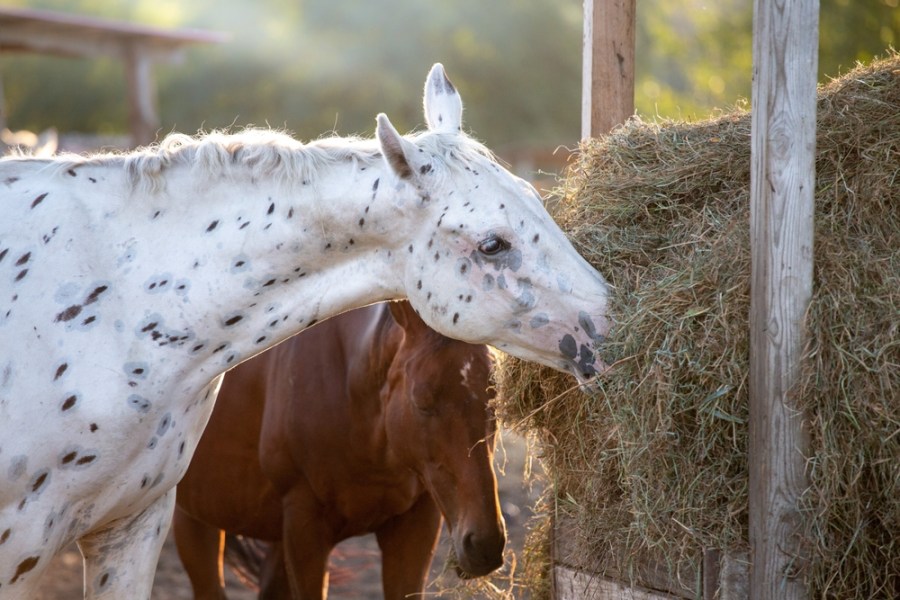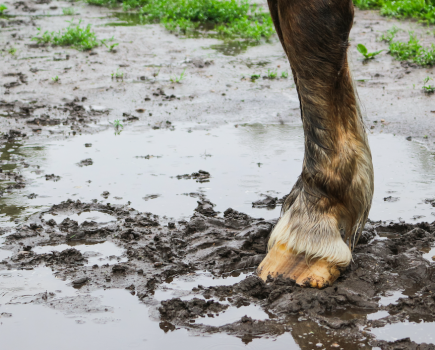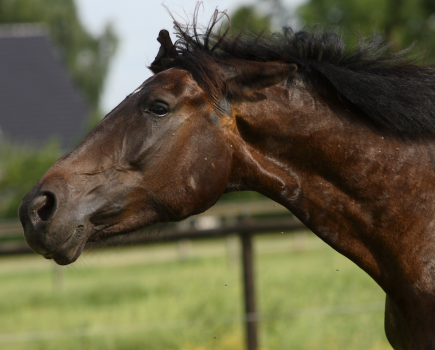Forage is the chief concern in a horse’s diet, because it is this fibre source that will keep their gut functioning properly and help to achieve optimal digestive health.
Ideally horses should be fed fibre ad lib, so that there is no risk of them running out of forage to eat, unless they are on a specific restricted diet. In the event of a hay shortage, as recently reported by Your Horse following a long spell of very dry weather in the UK this year, there are forage alternatives to choose from.
Fibre feed
One alternative is to incorporate a high-fibre feed into your horse’s ration to help extend (or partially replace) hay or haylage.
Dengie recommends introducing a fibre feed early on to give horses time to adjust gradually, reducing the risk of digestive upsets.
The feed company advises replacing 2–3kg of forage with an equal weight of a fibre feed to help make forage stocks last longer, without having to change your horse’s ration completely.
“The ideal feed will provide plenty of chew time and so unless the horse has dental issues, low starch, short-chopped fibre feeds are usually the best options,” says a spokesperson for Dengie.
“Some products can only be used as partial forage replacers, while others can be used to totally replace the ration.”
Minimise waste
Dengie also recommends minimising the amount of forage that is wasted by not overfeeding, particularly good doers that don’t need the extra calories.
“Using small-holed haynets or double netting can help slow intake and make a smaller amount of hay last longer,” adds the spokesperson.
“Every horse should have a minimum of 1.5% of their bodyweight in forage per day on a dry matter basis.
“For a 500kg horse this would equate to 11.5kg of haylage or 8.3kg of hay or chopped fibre feed as fed.”
Straw
Good quality straw is a particularly useful way to decrease the energy density of hay for good doers and overweight horses.
The type of straw is less important than the hygienic quality, although oat and barley straw are used more commonly than wheat.
“Straw shouldn’t be used as the sole forage source as the protein content is very low and the fibre can be particularly indigestible, which may contribute to impaction colic in susceptible horses,” says Clare Barfoot RNutr, research and development manager at Spillers.
“Up to 30% replacement is a good guide.”
Chopped dried grass
Another forage alternative is dried grass, which differs from hay because it is harvested earlier and is dried artificially rather than in the field.
“It is much greener in colour than hay and is often higher in protein and energy,” says Clare.
“It’s ideal for poor doers and veterans but shouldn’t be used to completely replace forage and should be avoided for laminitics and good doers.
Grass nuts
Harvested and dried in a similar way to chopped dried grass, nuts are pelleted rather than chopped.
The protein content is higher than hay and the fibre content is lower so they provide more energy per kilo.
“They are not suitable as a complete hay replacement, but can be useful for poor doers and veterans,” explains Clare.
“The high water soluble carbohydrate levels make them largely unsuitable for those prone to laminitis.”
Sugar beet
Soaked sugar beet is a palatable way to add fibre into your horse’s diet.
“It can’t be used to completely replace hay because it is 80% water once soaked and doesn’t require much chewing, which is physically and psychologically important for your horse,” warns Clare.
“However, there is some evidence that feeding sugar beet can increase the digestibility of your horse’s hay.”
Short chopped fibre
These products can be a useful option. Some contain vitamins and minerals in addition to chopped straw, grass and alfalfa.
“Look for products that can completely replace hay due to their similar levels of protein, fibre and energy,” says Clare.
“Often these products are also suitable for laminitics and good doers as well.”
Soakable fibre products
Some soaked feeds can partially replace hay due to their high fibre and low sugar and starch content.
“Look for products that have protein levels of 8-10%, which is similar to hay,” advises Clare.
High Fibre Cubes
These are a versatile and palatable way of providing additional fibre to the daily ration as a complete compound feed, as a partial forage replacer or as healthy fibrous treats in a snack ball.
Main image © Shutterstock








